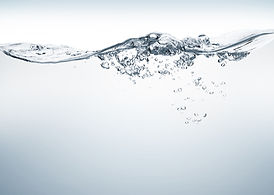
ENVIRONMENTAL

Legionella Risk Assessments

A KEY ASPECT
Legionella control, based on a Legionella risk assessment, is the key aspect of the ‘Responsible Persons’ duties regarding the supply of wholesome water and L8 compliance.
There are many elements to a comprehensive Legionellosis risk assessment but the following are essential to achieve L8 compliance: –
-
Site Identification and Governance
-
Executive Summary – Outlining management actions required
-
Contact, Responsibilities and Escalation Procedures
-
Remedial Actions – Needed to bring the site into compliance
-
Ongoing Monitoring Scheme – Actions required to maintain hygiene and restrict bacterial growth
-
Plant Identification and Assessment
-
Equipment Register
-
Schematic Diagram

CONTINUING COMPLIANCE
Following on from Legionella risk assessments, L8 compliance is achieved through provision of the services outlined below.
As members of the Legionella Control Association, we offer a complete package of measures designed to ensure these responsibilities are fully met and that the risk of a Legionnaires’ disease outbreak is managed
-
Legionella risk assessments
-
Cleaning and chlorination to the standards in ACOP L8
-
Legionellosis management – The regulation of all related diseases including Pontiac Fever
-
Bacterial sampling & analysis at a UKAS laboratory
-
Water systems monitoring
-
Pool monitoring
-
Chemical supply
-
Test equipment supply
-
Infrastructure refurbishment
-
Legionnaires’ disease training
-
Supply of site log books
LEGISLATION
There is plenty of legislation concerning environmental hazards from the Management of Health and Safety at Work 1999, through COSHH and RIDDOR.
However, these can be vague as to exactly what specific actions should be taken. The one document that sums up the requirements, and is used as the basis for Legionella risk assessments, is "Legionnaires’ Disease: The control of legionella bacteria in water systems" – Approved Code of Practice and Guidance L8 (Fourth edition 2013).
Between 200 and 250 people die in Britain each year from Legionnaires’ disease although it is accepted that this is an under estimate as the symptoms are often mistaken for flu.
Management measures are generally straightforward and involve repair to the infrastructure and temperature monitoring. In more difficult cases additional governance measures such as low level biocide dosing can be employed.
Feedback and evaluation, usually through bacterial sampling, enables oversight of the effectiveness of the programme
TEMPERATURE REGULATION
Temperature regulation is the most common method of Legionella control but requires regular monitoring.
REFURBISHMENT
We provide a full set of remedial and support services to bring water systems up to current standards and then to maintain them in that condition.
This includes:-
-
Tank removal, replacement, repair or re-lining
-
Fitting of lids, breathers and screens
-
Cleaning of calorifiers
-
Re-plumbing to remove dead or stagnant pipework
WATER SYSTEMS DOSING
Large or difficult to clean systems can be protected by additional biocide dosing.
We install, commissioning and run approved dosing equipment.
E.g. Continuous chlorine dioxide dosing into the potable water supply.